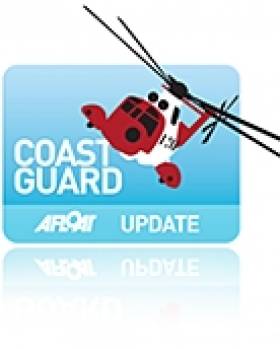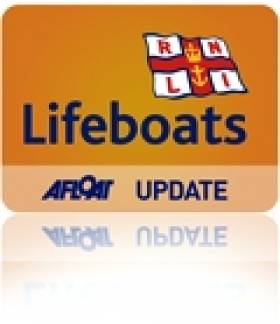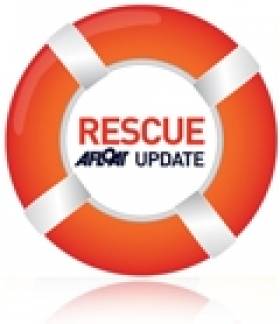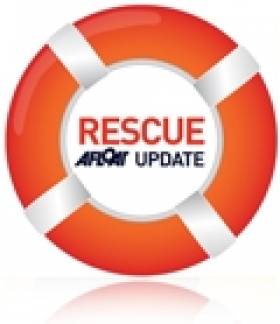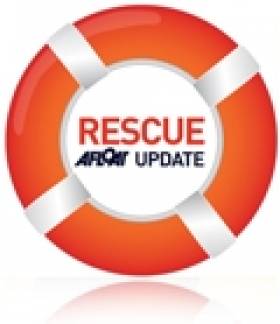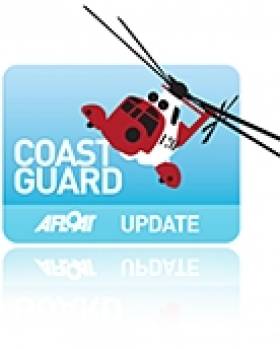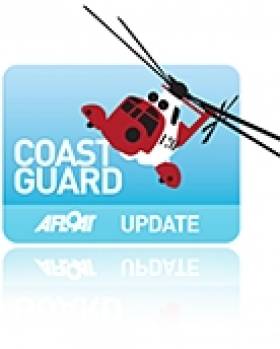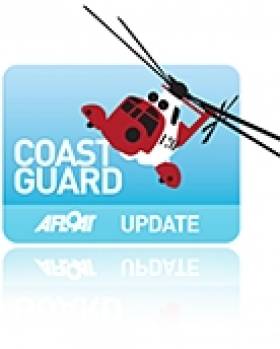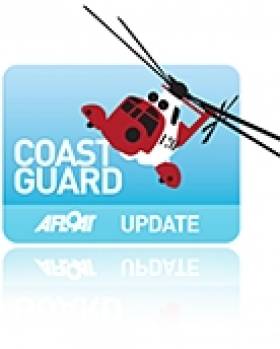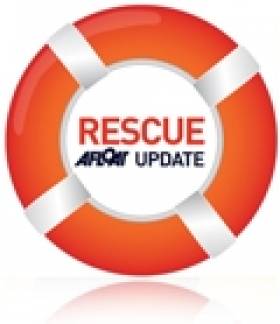Displaying items by tag: Rescue
Irish Coast Guard's New Smartphone App Aims to Save Lives
#COASTGUARD - A new smartphone app from the Irish Coast Guard could save dozens of lives, as the Irish Independent reports.
The new technology allows the coastguard to track vessels at sea, and automatically prompts a search and rescue effort if they do to return to port as expected.
"The whole idea is to encourage mariners to inform us when they are going out to sea," said Malin Head district commander Derek Flannery. "When and where they plan to go, when they plan to return and how many are going."
It is hoped that the new app will encourage seagoers to me more conscious of altering emergency services to their movements, in the wake of very recent tragedies off Spanish Point in Co Clare and the Beara Peninsula in West Cork.
They system works by asking mariners to input details about their excursions - such as destination and expected return time - into the app before they set off. The app will also track the vessel's movements via GPS.
"We'll text the boater to remind them to check in but if we don't get a response we can send out a crew," added Flanagan.
According to TheJournal.ie, the iPhone-only app is currently being trialled by sailors, divers, fishermen, powerboaters and pleasurecraft users throughout Ireland, and there are plans to develop the app for a range of smartphones.
“Getting to casualties early is the key for our search and rescue units," said Dublin Bay North TD Seán Kenny. "This new app has the potential to get our resources on-scene as quickly as possible which will in turn save lives.”
Woman and Child Rescued from Stranded Dinghy in Kinvara
#LIFEBOAT - The Galway Advertiser reports that the Galway RNLI lifeboat came to the rescue of a mother and child from a small dinghy near Kinvara in the south-eastern corner of Galway Bay yesterday.
High winds and an offshore breeze caused the dingy to drift onto Mulrooney Island between Kinvara and Parkmore Pier, stranding the Dublin woman and her four-year-old son, who are holidaying in the area.
The lifeboat crew were dispatched to the scene by the Irish Coast Guard after being notified by a canoeist in the area who assisted the family. Both were wearing lifejackets at the time of the incident, and were taken back to shore unharmed.
German Tourist, Yachtsman Rescued in Separate Boating Incidents
#RESCUE - RTÉ News reports that a German tourist missing after his cruiser ran aground on Lough Ree last night has been found safe and well.
The man was one of three on board the vessel that grounded close to Barley Harbour.
Lough Ree RNLI lifeboat recovered the other two men from the vessel but the third had already left on a dinghy to find help.
He was located by gardaí on an Island in the lough around midnight.
Meanwhile, one person was rescued from a yacht off Hook Head in stormy force seven winds and massive sea swells late last night, according to The Irish Times.
The man, who was reportedly the only person on board the yacht, was airlifted to safety by UK search and rescue helicopter.
RNLI adds:
Lough Ree RNLI rescued two German men from a cruiser that ran aground north of Priests Island close to Barley Harbour in County Longford yesterday evening (Wednesday).
The charity's volunteer crew based at Coosan Point in Athlone launched their inshore lifeboat at 8.45pm (Wednesday 15 August) following a report that a vessel had got into difficulty on the lough on the River Shannon.
A major search and rescue operation involving Lough Ree RNLI, Lough Ree Rescue, Athlone Sub Aqua Club and the Sligo Coast Guard helicopter Rescue 118 was mounted in conditions described at the time as windy, with a force six wind having prevailed throughout the day.
A third man who had left the cruiser and boarded a dinghy to raise the alarm was reported missing.
Lough Ree RNLI located the cruiser and arrived on scene within 20-25 minutes where lifeboat crew including Kieran Sloyan, Lee Carney and Donal Heraghty removed the two German men from their vessel.
They were then put on the lifeboat and brought safely ashore to Lanesborough where they were met by Gardai.
Lough Ree RNLI then resumed a search for the third man with the other search and rescue agencies.
He was subsequently located safe and well around midnight on Cloone Skert by Gardai who had heard shouts from the shore at north Portrunny in Roscommon.
Lough Ree Lifeboat Operations Manager Damian Delaney said: 'The three tourists particularly the man who had left the boat to look for assistance were very lucky as weather conditions were pretty severe at the time. Thankfully, there was a good co-ordinated response and a good turnout of people which resulted in a positive outcome. As time went on and it got dark and darker we were very concerned for the third man so it was great that he was brought ashore.'
Teen Injured in Water at Kilkee Pier
#RESCUE - A teenage boy was airlifted to hospital yesterday after an incident at Kilkee Pier in Co Clare.
The 17-year-old, understood to be from Limerick, sustained a serious injury after diving from the pier into shallow water.
The Irish Coast Guard station at Valentia Island co-ordinated the recovery effort, with the local coastguard and paramedics sent to the pier after the alarm was raised at lunchtime yesterday.
As The Irish Times reports, the new Shannon rescue helicopter was also tasked to the scene amid concerned that the teen had injuries to his head, neck and back.
Rescuers waded into the water to recover the young man, who was treated at the scene for a serious head wound before being driven to the local golf club to the makeshift helicopter landing spot, from where he was airlifted to Galway University Hospital for treatment, according to RTÉ News.
Kilkee Marine Rescue Service chairman Manuel Di Lucia said that authorities "need to consider" the absence of a dedicated helicopter landing site in Kilkee closer to the pier.
Rescuers Guided to Donegal Swimmer By Woman With Binoculars
#RESCUE - The Irish Times reports on the rescue of a swimmer in distress off the Donegal coast thanks to the help of a woman with binoculars.
And the RNLI has paid tribute to the Malin Head coastguard unit for its knowledge of the area which was instrumental to the postive turn-out.
The man had been swimming off Five Fingers strand in Inishowen on Friday afternoon when he was washed out more than one-and-a-half miles into the sea.
The Malin Head unit of the Irish Coast Guard immediately co-ordinated the rescue effort, which saw both the Sligo coastguard helicopter and Lough Swilly RNLI lifeboat dispatched to the scene.
In an echo of June's 'miracle rescue' of a man in Cork Harbour after he was spotted by telescope, rescuers were assisted by a woman with an elevated view on the shore who spotted the swimmer and guided them to his location.
The man was quickly airlifted to Altnagelvin Hospital in Derry for treatment. He was said to be very traumatised after the incident.
“The outcome could have been different but for the local knowledge these guys have,” said Lough Swilly lifeboat spokesman Joe Joyce.
As previously reported on Afloat.ie, the coastguard radio stations at Malin Head and Valentia are both under threat of closure following a 'value for money' review of the State's marine rescue services.
Fisherman Airlifted from French Trawler Off West Cork
#COASTGUARD - A crewman on a French trawler off West Cork has been airlifted to hospital by coastguard helicopter, as RTÉ News reports.
The fisherman is understood to have suffered head injuries on the fishing vessel some 240km off the Beara Peninsula in the early hours of this morning Tuesday 7 August.
The Irish Coast Guard's Valentia unit co-ordinated the airlift, dispatching the Shannon rescue helicopter to the trawler. The injured man was winched on board and taken to Cork University Hospital. His current condition is not yet known.
Shannon Helicopter Goes The Distance for Donegal Rescue
#COASTGUARD - The Shannon-based Irish Coast Guard rescue helicopter was dispatched to the Donegal coast on Friday night to rescue a young boy seriously injured in a farming accident.
As the Clare Herald reports, Rescue 115 - which only entered service a month ago - was called on to make the long-distance journey after the Sligo coastguard chopper was grounded by technical problems.
The mission put Shannon's new Sikorsky S92A craft's long-range capabilities and specialist medical equipment to the test, as it flew from Clare to Tory Island via Sligo General Hospital to evaculate the six-year-old boy, airlifting him to Letterkenny General Hospital for treatment.
As previously reported on Afloat.ie, the Irish Coast Guard took delivery of the new chopper at its Shannon base earlier this year as part of the rescue service's €500 million deal with CHC Ireland to revamp the aircraft fleet. Shannon is the only base to receive a brand new helicopter as part of the contract.
Equipped for dedicated search and rescue operations, the Sikorsky S92A provides coverage for deep Atlantic Ocean missions, services Ireland's offshore islands and provides rescue cover on the west coast from Cork to Galway.
Howth Coast Guard Rescues Faller from Cliff Path
#RESCUE - The Howth Coast Guard Cliff Rescue team and Irish Coast Guard helicopter Rescue 116 were tasked yesterday evening (26 July) to the cliffs in Howth to assist a woman who fell from the cliff path at Whitewater Brook.
The tourist in her 20s apparently fell some 20 feet from the path while descending to the beach.
Due to the location, members of the public witnessing the incident were unable to get a phone signal and had return to the top of the cliff path to alert the emergency services.
Once tasked the team arrived quickly at the scene, and with the assistance of the helicopter winchman, the woman was treated for spinal injuries as a precaution by coastguard paramedics before being airlifted to Tallaght Hospital.
The teams thanked the quick actions from members of the public which enabled them to respond quickly, and reminded anyone who sees someone who needs help on cliffs, in the water or on the beach to call the emergency number at 999 or 112.
Man and Son Rescued from Capsized Fishing Boat
#coastguard – A man and his teenage son have been rescued from their upturned fishing boat this afternoon on the Irish Sea.
Liverpool Coastguard received a call at 12.45 pm to report that the man and his son were on top of the hull of their orange open topped fishing boat. The boy was wearing a lifejacket. They had called a shore contact, using their waterproof mobile phone, who had then called the Coastguard.
Lytham St Annes RNLI inshore and all weather lifeboats were requested to launch and soon found the man and his son off Lytham St Annes. Both had been in the sea for about half an hour and were very cold. They were brought to shore and were then transferred on to hospital.
Rescue Coordination Centre Manager Tony Topping said:
"Fortunately the man and his son were found relatively quickly following their phone call and they had been able to scramble onto the hull of their small vessel.
If you're using your mobile phone in an emergency situation at sea or along the coast call 999 and ask for the Coastguard. This must always be your first call.
We would like to remind people who are setting to sea in small boats to take a reliable method of communication with them along with a back-up method. A portable waterproof vhf radio is ideal with a waterproof mobile phone or phone in a plastic bag as back-up. Remember that in many places around the coast mobile phone coverage is patchy and a radio is much more reliable."
Man Rescued After Fall On Rocks in Co Down Coast
#RESCUE - A man has been rescued after falling on rocks and into the sea near Sheepland Harbour in Ardlass, Co Down yesterday 7 July.
BBC News reports that local lifeboat crews from the RNLI joined the Belfast coastguard and an Irish Coast Guard helicopter in the cross-border rescue effort, which saw the man airlifted to hospital in Belfast.
The man has reportedly fallen some 25 feet onto rocks and "bounced" into the water, according to Alan Pritchard of the Belfast coastguard, who added that family members were able to recover the man back into the rocks.
The full extent of the man's condition is not yet known, though it is believed he sustained significant neck and spinal injuries in the fall.
In the Belfast Telegraph, South Down MP Margaret Ritchie was quoted paying tribute to the rescuers.
"Were it not for this cross-border effort, we might be facing a very different story and it backs up my passionate belief that we must retain strong, effective coastguard services North and South and make sure that they work in close harmony with one another," she said.





























